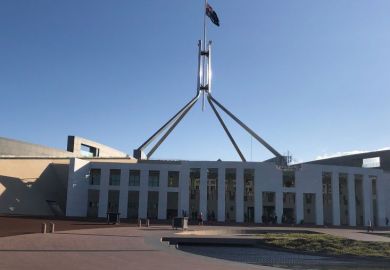Australia should abandon its plan to limit overseas enrolments because as many as nine other policy interventions have probably already achieved the government’s objective of reducing migration, according to Australian National University (ANU) policy analyst Andrew Norton.
Professor Norton said the caps risked inflicting unnecessary damage. “Some education providers will close and others will shrink,” he warns in a report published by ANU’s Migration Hub.
“Thousands of people…in the education sector will lose their jobs. Industries relying on international students as workers and customers will go into decline. International education policy needs a period of pause and reflection, not the current poorly thought through plan to cap international student numbers.”
Professor Norton said consultation on the bill to implement the caps had been “so unsatisfactory” that government agencies had gone public with their concerns, in submissions to the Senate committee considering the bill.
The Department of Home Affairs, the higher education regulator Teqsa and the vocational education regulator Asqa all said the caps could not be implemented without data improvements. Asqa warned of potential college closures and displacement of students.
Professor Norton said the time frame for implementing next year’s caps was particularly problematic. Institutions risked inheriting quotas that they had already exceeded, forcing them to cancel enrolments and potentially seek government compensation.
He said uncertainties about whether students would accept enrolments or successfully obtain visas created another dilemma for institutions. If they underestimated knock-backs, they risked exceeding their caps, triggering automatic suspension of their registrations. This danger would force them to recruit conservatively and lose money.
He also criticised the government’s plan to cap “cumulative” enrolments tallied over 12 months rather than at single points in time. This meant that students who had completed their courses would be included in the caps, preventing institutions from recruiting replacements. Universities and colleges would be forced to prioritise commencements at the beginning of the year, even though most international students preferred mid-year starts.
Professor Norton said caps were being proposed after a barrage of policy changes – including a visa fee hike, reprioritised visa processing, increased financial capacity requirements for students and six other “significant” interventions – had “inflicted blow after blow” on the industry.
He said these changes had probably already depleted overseas vocational education enrolments to such a degree that capping their numbers would make no difference anyway. In higher education, the reforms had favoured rich institutions and skewed international enrolments towards the large cities where the government wanted fewer foreigners.
Professor Norton said it would take time to assess the impacts of all these changes, and longer for institutional quotas to take effect. “We should wait and see rather than rushing into caps.”
Jason Clare, the education minister, said international students had “come back much faster than we ever expected” after borders reopened post-Covid. The government wanted to “help maintain the social licence of the sector and enable it to grow sustainably over time”, he said.
“This is a reform that’s been encouraged and asked for by a number of universities. We’ve got to get the implementation of it right, and we’re consulting with the sector on that,” Mr Clare told Times Higher Education.
Professor Norton said the record number of recent arrivals of overseas students was a “by-product” of Covid “disruption”. He said the government had forecasted that students’ contribution to net overseas migration would return to pre-Covid norms over the next few years, in a report published ahead of the policy changes.
Another report suggested that Australia’s population had increased by less than it would have if pre-Covid patterns had persisted.
Register to continue
Why register?
- Registration is free and only takes a moment
- Once registered, you can read 3 articles a month
- Sign up for our newsletter
Subscribe
Or subscribe for unlimited access to:
- Unlimited access to news, views, insights & reviews
- Digital editions
- Digital access to THE’s university and college rankings analysis
Already registered or a current subscriber?










